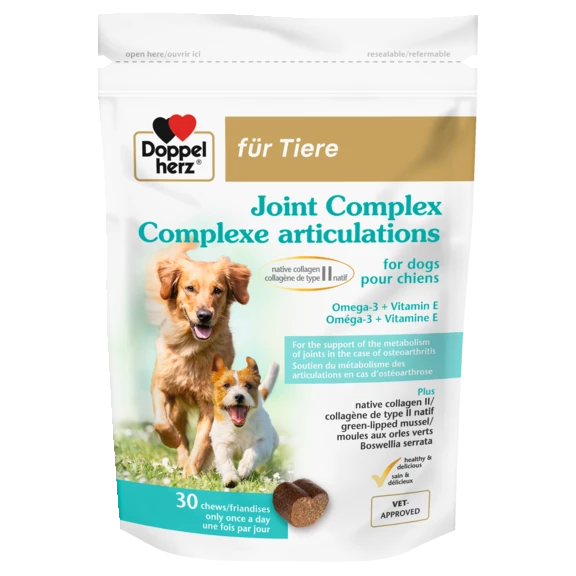It is a degenerative disease of the vertebral bodies and intervertebral discs in which stiffening and ossification occur in the spinal region of the dog. Changes in the elastic components of the spinal column lead to instability in the vertebral region. The organism tries to compensate for this nstability, which can lead to bony remodeling of the spine. The resulting stiffening and ossification of the spine are actually repair measures taken by the body to maintain the stability of the skeleton. This can lead to complete bone bridges between the individual vertebrae, so that they are completely fused together in bone. This may force the skeleton into unnatural curvatures and postures.
Causes for spondylosis
Large and heavy breeds such as Molossians and Boxers tend to develop spondylosis due to a genetic disposition that manifests itself as weakness of the supporting connective tissue. This means that even young dogs can become ill and show the first symptoms.
Furthermore, spondylosis is a typical wear and tear disease that often occurs in older dogs. It often occurs in service and emergency dogs, but can also affect younger animals that are physically very demanding or dogs with a particularly strong urge to move and play.
Symptoms of spondylosis
The symptoms of spondylosis in dogs are usually similar to those of other joint diseases: The four-legged friend does not like to move, does not want to climb stairs, jump onto the couch or into the car as usual. The movements are stiffer and slower, comparable to pain avoidance and a protective posture in humans.

Spondylosis is often already advanced when lameness and recognisable functional restrictions of the locomotor system occur. This becomes visible, for example, when male dogs no longer lift their leg when urinating or there may be problems with defecation because the animal has pain when curving its back. Painful sounds are sometimes emitted during sudden movements.
Diagnosis of spondylosis
The symptoms of spondylosis can be confused with those of other forms and locations of arthritis.
For a clear diagnosis and differentiation from other degenerative processes, only an X-ray and careful palpation can provide information. Spondylosis occurs in episodes - after a long period of apparent freedom from symptoms, massive complaints can suddenly become apparent. At the beginning, there are usually few visible symptoms, so that the diagnosis can therefore also be an incidental finding during an X-ray examination of the spine.
Prevention of spondylosis
Despite genetic predisposition, spondylosis, as well as arthrosis, can be counteracted well with individually adapted exercise and optimal nutrition that promotes the joints, against early wear and tear and high-grade development at a young age.
In all cases of wear and tear of the joints, it is crucial to only exercise the dog according to its constitution and age. However, this can only be done through the dog owner's attentiveness. Exercise is of course indispensable and healthy for dogs, but it should be appropriate. Sometimes dog owners even have to slow down their four-legged friend in order to keep the musculoskeletal system healthy. Particularly with a dog that is still young, whose skeleton can be very soft and sensitive, caution must be exercised. Some dog breeds should not jump or climb stairs too much until they reach a certain age. In genetically predisposed dogs, early, precautionary X-ray diagnosis may be useful. Already ill and such predisposed animals should be gently exercised, whereby swimming and steady walking positively supports many affected dogs.
Nowadays there is a wide choice of dog food. Nevertheless, many dogs are not fed optimally - evidence of this is the considerable number of overweight and joint-diseased dogs. Being overweight puts additional stress on the bone structure and promotes joint wear.
A species-appropriate, healthy and balanced diet is important. To support the musculoskeletal system and joint processes, special supplementary feeds with joint-active, high-dose ingredients such as omega-3 fatty acids, vitamin E, green-lipped mussel, chondroitin, devil's claw and collagen Il can be given at any age.
